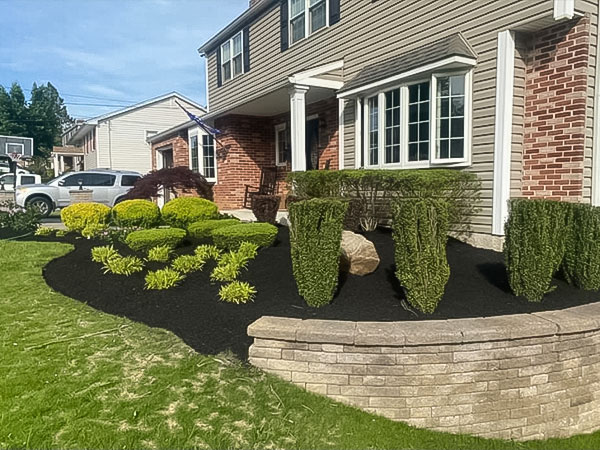Specialist Landscaping Services for Lasting Outdoor Transformation
Enhancing exterior rooms through professional landscape design services can use even more than simply visual appeal; it can cultivate a sustainable atmosphere that benefits both residential or commercial property proprietors and the earth. From picking indigenous plants to implementing water conservation techniques and making use of environmentally friendly hardscape solutions, the possibilities for lasting outside transformation are large. By recognizing the importance of maintenance techniques that support sustainability, expert landscaping companies can absolutely make a long lasting influence on the outdoor spaces they deal with.
Benefits of Lasting Landscaping
Sustainable landscaping gives numerous environmental and financial benefits for both residential property proprietors and the area. By carrying out sustainable methods such as xeriscaping, making use of indigenous plants, and lessening water use, residential property owners can considerably decrease their environmental impact. These techniques not just conserve water yet likewise advertise biodiversity and lower the need for damaging pesticides and fertilizers.

From a neighborhood perspective, sustainable landscape design plays a vital role in boosting air and water high quality, decreasing city warm island results, and giving habitats for regional wild animals. These advantages contribute to developing much healthier and more lasting atmospheres for everyone to take pleasure in.
Native Plants Selection and Design
When preparing a landscape style, picking indigenous plants is essential for optimizing sustainability and community wellness. Native plants are adjusted to the neighborhood climate, soil conditions, and bugs, making them low-maintenance and much more resilient to grow in their all-natural setting. Integrating native plants into landscaping develops not just enhances biodiversity however likewise sustains pollinators, helpful insects, and regional wild animals.
Designing with indigenous plants entails cautious factor to consider of elements such as plant size, growth routine, flower time, and water requirements to create a lasting and visually enticing landscape. By selecting a diverse option of indigenous plants, landscape designers can develop balanced communities that bring in a variety of types and contribute to the general health and wellness of the atmosphere.
Additionally, indigenous plants can help in reducing water consumption, decrease the requirement for chemical pesticides and plant foods, and enhance dirt quality through their natural procedures. With appropriate option and style, indigenous plants can change outside areas right into growing, sustainable landscapes that profit both the setting and the neighborhood.
Water Conservation Strategies
Including indigenous plants into landscaping develops not only boosts biodiversity however also supports pollinators, advantageous pests, and neighborhood wild animals, which emphasizes the relevance of applying water preservation methods in landscaping methods. Water preservation is critical for lasting outside spaces, especially in regions susceptible to dry spell or water shortage. One effective technique is the use of drip irrigation systems, which supply water directly to the plant's origin zone, lessening dissipation and runoff. Mulching is one more important practice that assists keep dirt moisture, subdues weed growth, and boosts dirt wellness.

Eco-Friendly Hardscape Solutions
The application of ecologically aware materials in hardscape layout is a critical facet of developing sustainable outside spaces. Environmentally friendly hardscape options encompass a variety of techniques aimed at reducing ecological impact while improving the looks and performance of exterior locations. Integrating products such as permeable pavers, redeemed timber, read here recycled plastics, and all-natural stone can substantially minimize the environmental footprint of hardscape installations.
Absorptive pavers, for instance, enable rain to leak right into the ground, decreasing drainage and avoiding water pollution. Redeemed wood adds a rustic appeal to outdoor space while advertising the reuse of existing resources. Recycled plastics can be transformed right into resilient and low-maintenance hardscape elements, using a sustainable alternative to typical products. All-natural stone sourced from local quarries lowers transport discharges and blends sympathetically with the surrounding environment.
Upkeep Practices for Sustainability
To support the ecological honesty of green hardscape solutions, executing critical maintenance methods is vital for ensuring long-term sustainability in outdoor landscape design tasks. Regular maintenance not only preserves the aesthetic appeal of the landscape however likewise adds to its total sustainability by reducing environmental effect.
One key upkeep practice for sustainability appertains watering monitoring. Effective sprinkling strategies, such as drip irrigation systems or rainwater harvesting, help conserve water and advertise plant wellness. In addition, routine examination and modification of look at more info irrigation systems can protect against water wastefulness and guarantee optimal hydration for plants.
An additional important element of sustainable upkeep is the accountable use fertilizers and pesticides. Going with natural plant foods and employing incorporated insect monitoring methods lessens harmful chemical runoff right into the environment, securing both plant and environment balance.
Additionally, routine cleansing and maintenance of hardscape functions like absorptive pavers or stone pathways avoid debris build-up and keep capability while supporting water seepage and additional hints drain, hence reducing the risk of disintegration and flooding. Landscaping San Marcos. By adhering to these sustainable upkeep practices, outdoor landscapes can flourish harmoniously while lessening their eco-friendly footprint
Conclusion
To conclude, sustainable landscaping provides countless advantages via the usage of indigenous plants, water preservation strategies, eco-friendly hardscape options, and lasting upkeep practices. By applying these strategies, outdoor rooms can be transformed right into environmentally-friendly and cosmetically pleasing areas that support biodiversity and lower ecological influence. Purchasing expert landscaping solutions that prioritize sustainability can bring about long-lasting benefits for both the atmosphere and building owners.
From picking indigenous plants to carrying out water preservation techniques and using green hardscape options, the opportunities for lasting outside improvement are vast. By applying lasting methods such as xeriscaping, making use of native plants, and lessening water usage, property owners can dramatically lower their environmental impact. Water conservation is essential for sustainable outside rooms, especially in regions vulnerable to dry spell or water shortage. By executing these water conservation methods, landscaping experts can produce gorgeous, lasting outdoor areas that profit both the setting and the community.
In verdict, sustainable landscaping offers countless advantages via the usage of native plants, water conservation techniques, environment-friendly hardscape remedies, and sustainable upkeep practices.